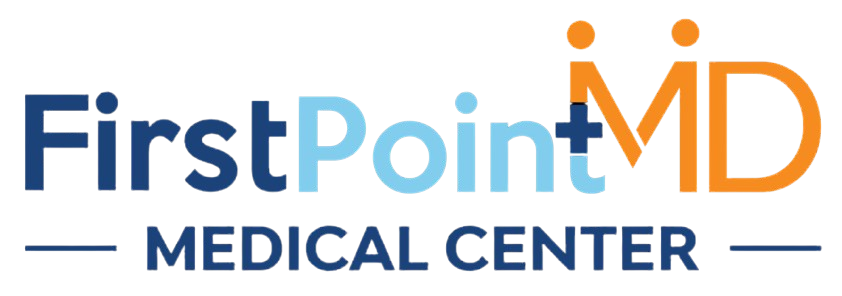Medication adherence — the act of taking medications as prescribed — is one of the most important aspects of effective healthcare. Yet, according to the World Health Organization (WHO), nearly 50% of patients with chronic diseases do not take their medications correctly. This lack of adherence can lead to worsened health outcomes, unnecessary hospitalizations, and increased healthcare costs.
In today’s technology-driven world, remote patient monitoring (RPM) is transforming the way healthcare providers support patients in managing their medications. By using connected devices and digital platforms, providers can track health data in real time, improve patient engagement, and intervene early when adherence declines.
At First Point MD, we prioritize innovation in patient care. Our remote monitoring solutions help patients stay on track with their medications, while giving providers the tools they need to make timely, informed decisions. Let’s explore how RPM enhances medication adherence and leads to better health outcomes.
Understanding the Challenge: Why Patients Struggle with Medication Adherence
Medication adherence is influenced by a combination of behavioral, social, and medical factors. Some of the most common reasons patients fail to take their medications properly include:
-
Forgetfulness — Especially common among elderly or multi-prescription patients.
-
Side effects — Unpleasant symptoms may cause patients to stop taking medications.
-
Lack of understanding — Patients may not fully understand the importance of consistent medication use.
-
Cost of medication — High costs often lead to skipped doses or delayed refills.
-
Complex regimens — Patients managing multiple conditions may find it difficult to keep track of schedules.
-
Poor communication — Limited follow-up or unclear instructions from healthcare providers can cause confusion.
These challenges are not just administrative problems — they directly affect patient health. Non-adherence leads to disease progression, treatment failure, and increased mortality rates, especially in chronic illnesses like diabetes, hypertension, and heart disease.
What Is Remote Patient Monitoring (RPM)?
Remote Patient Monitoring (RPM) refers to the use of technology to collect and transmit health data from patients outside traditional healthcare settings. This data may include:
-
Blood pressure readings
-
Glucose levels
-
Heart rate or oxygen saturation
-
Medication intake records
Through connected devices, such as smart pill dispensers, wearable sensors, or mobile health apps, clinicians can continuously monitor a patient’s condition and adherence. The data is securely sent to healthcare providers, allowing for proactive management and personalized care plans.
At First Point MD, we use RPM technology as part of our integrated care model — ensuring that every patient receives ongoing support between appointments.
The Link Between Remote Monitoring and Medication Adherence
Remote monitoring doesn’t just gather data — it changes patient behavior by fostering accountability, awareness, and provider engagement. Here’s how RPM improves adherence:
Real-Time Tracking of Medication Use
Smart medication dispensers and connected apps can record when a patient takes their medicine, sending alerts to both the patient and care team if a dose is missed. This ensures early intervention before non-adherence leads to complications.
For example, a diabetic patient who forgets insulin doses can receive a text reminder, while their provider is notified instantly to follow up.
Personalized Reminders and Alerts
Many patients simply forget to take their medication, especially if they juggle multiple prescriptions. RPM systems send automated reminders via text, call, or app notifications, ensuring doses are not missed. These personalized alerts can also adjust to individual routines, improving long-term consistency.
Improved Patient-Provider Communication
RPM enhances the connection between patients and providers. Instead of waiting weeks for follow-up visits, healthcare teams can review data daily and reach out immediately when irregularities are detected. This level of engagement builds trust, encourages adherence, and allows patients to feel supported.
Early Detection of Adverse Reactions
Side effects are a leading cause of non-adherence. With remote monitoring, any changes in vital signs or symptoms can be detected early, allowing providers to adjust medications before the patient discontinues use. This proactive care minimizes hospitalizations and maintains treatment continuity.
Enhanced Patient Engagement and Education
When patients see their health data in real time, they gain a better understanding of how their behavior impacts outcomes. RPM platforms often include educational modules, empowering patients to make informed choices about their medications and lifestyle.
Evidence-Based Benefits of Remote Monitoring
Numerous studies have shown the positive impact of RPM on medication adherence and clinical outcomes:
-
A 2022 study published in JMIR Medical Informatics found that patients using remote monitoring tools were 35% more likely to adhere to prescribed medications.
-
Research from the American Heart Association revealed that RPM programs reduced hospital readmissions by up to 50% for patients with heart failure.
-
A meta-analysis in The Lancet Digital Health showed that RPM improved medication adherence rates across chronic diseases, especially when combined with personalized feedback.
These findings underscore the importance of digital health technologies in promoting consistent treatment and improving patient outcomes.
How Remote Monitoring Improves Health Outcomes
Reduces Hospital Readmissions
Non-adherence often results in uncontrolled symptoms that lead to emergency visits or readmissions. RPM enables continuous tracking, allowing early detection and prompt intervention before conditions worsen.
Better Chronic Disease Management
For conditions like hypertension, diabetes, or COPD, consistent medication use is crucial. Remote monitoring ensures stable control of vital signs, reducing complications and improving quality of life.
Enhances Treatment Precision
Continuous data flow gives healthcare providers a comprehensive view of patient progress, helping them fine-tune medication types and dosages. This results in personalized treatment that’s more effective and safer.
Promotes Preventive Care
By identifying non-adherence or health deterioration early, RPM shifts care from reactive to preventive — catching problems before they escalate into costly or life-threatening situations.
Improves Patient Satisfaction
Patients who feel connected and supported by their care team are more likely to follow treatment plans. RPM strengthens the patient-provider relationship, resulting in higher satisfaction and better engagement.
Integrating RPM into Clinical Practice at First Point MD
At First Point MD, we use advanced remote monitoring systems to support patients with chronic conditions and long-term medication needs. Our care model includes:
-
Connected Health Devices: Blood pressure monitors, glucometers, and wearable trackers that sync automatically.
-
Medication Tracking Tools: Smart dispensers and mobile reminders to ensure timely doses.
-
Continuous Provider Oversight: Our clinicians monitor data in real time, reaching out immediately if an issue arises.
-
Patient Education Programs: Helping patients understand the “why” behind their treatment, not just the “what.”
-
Data-Driven Decisions: Using analytics to predict risks and optimize medication plans.
This integration bridges the gap between clinic visits and everyday life, creating a 24/7 care environment that drives better outcomes.
Overcoming Barriers to Remote Monitoring Adoption
While the benefits of RPM are clear, implementation comes with challenges. Common barriers include:
-
Technology literacy: Some patients may struggle with digital tools.
-
Privacy concerns: Protecting patient data is essential in digital health systems.
-
Device costs: Not all insurance plans cover RPM equipment.
-
Provider training: Clinicians need education on interpreting remote data effectively.
At First Point MD, we address these barriers through patient training, secure data systems, and ongoing technical support. Our goal is to make RPM accessible, safe, and user-friendly for every patient, regardless of age or background.
The Role of Family and Caregivers
Family members play an important role in supporting medication adherence. RPM platforms often allow caregivers to access reports or receive alerts, helping them stay informed and involved. This shared accountability encourages better adherence and reduces the emotional burden on patients.
The Future of Remote Monitoring and Medication Adherence
The future of healthcare lies in connected, personalized care. As artificial intelligence (AI), predictive analytics, and wearable devices evolve, RPM will become even more powerful. Future advancements may include:
-
AI-powered adherence prediction models to identify at-risk patients early.
-
Voice assistants to remind patients and answer medication questions.
-
Smart home integrations with connected pillboxes and biometric sensors.
-
Data interoperability that allows seamless sharing between providers, pharmacies, and insurers.
These innovations will make healthcare more proactive, data-driven, and patient-centered — aligning perfectly with First Point MD’s mission to deliver modern, compassionate care.
Conclusion
Medication adherence is one of the cornerstones of successful treatment, especially for chronic illnesses. However, traditional care models often fall short in tracking and supporting patient behavior between visits. Remote patient monitoring bridges this gap, offering a continuous, data-driven connection between patients and healthcare providers.
By improving adherence, detecting problems early, and empowering patients with knowledge, RPM doesn’t just change how we deliver care — it changes how patients live.
At First Point MD, our remote monitoring programs help ensure that every dose counts, every symptom is tracked, and every patient stays on the path toward better health.
FAQs
What is remote patient monitoring (RPM)?
Remote patient monitoring uses digital devices to collect and transmit health data from patients to healthcare providers, allowing real-time oversight outside clinical settings.
How does RPM help with medication adherence?
RPM tracks medication intake, sends reminders, and alerts providers if doses are missed — helping patients stay consistent with their treatment.
Is remote monitoring secure?
Yes. At First Point MD, all RPM systems comply with HIPAA regulations to ensure patient data privacy and confidentiality.
Do insurance plans cover remote monitoring?
Many insurance providers now cover RPM for chronic conditions like diabetes or hypertension. Our staff can help verify your coverage.
Can RPM replace regular doctor visits?
RPM complements — not replaces — traditional visits. It helps maintain continuous communication between appointments for better outcomes.


